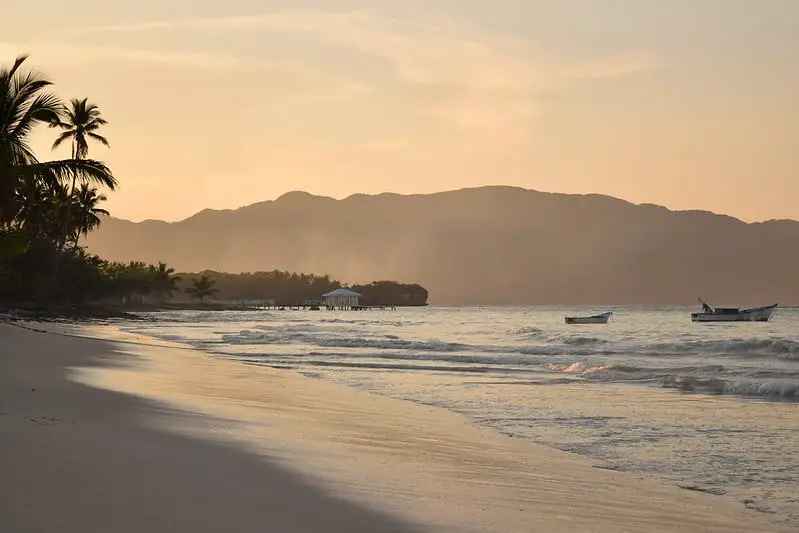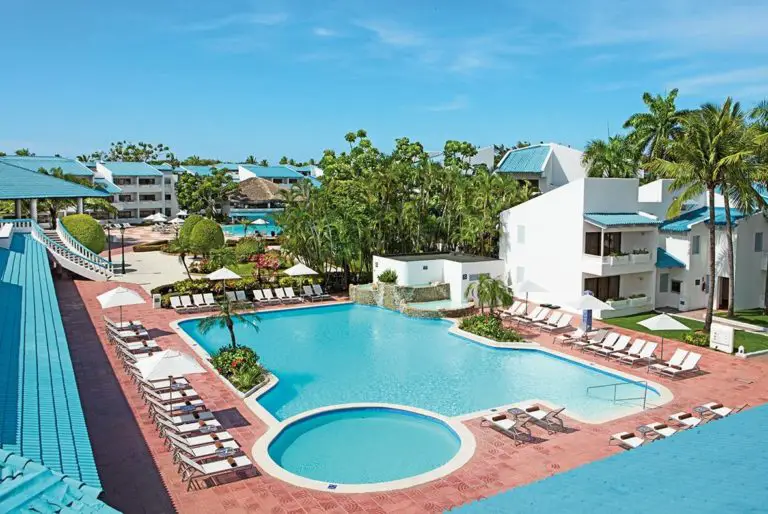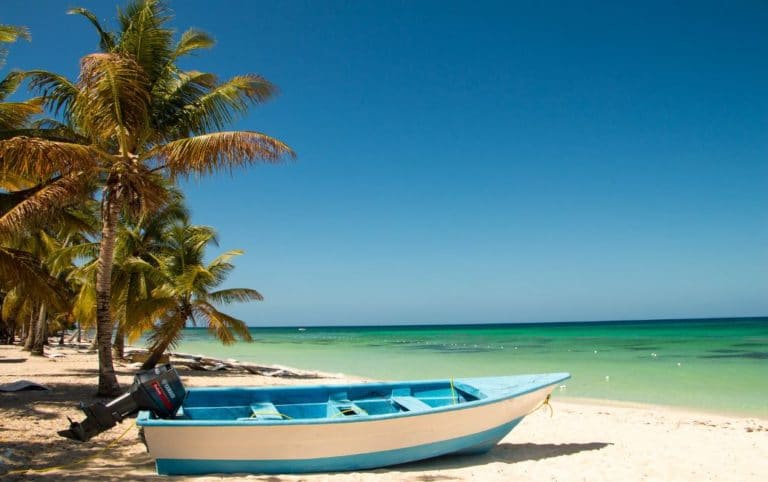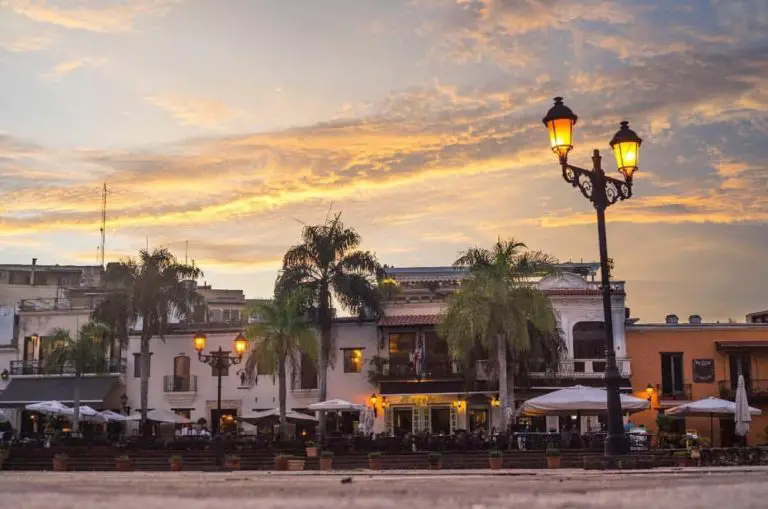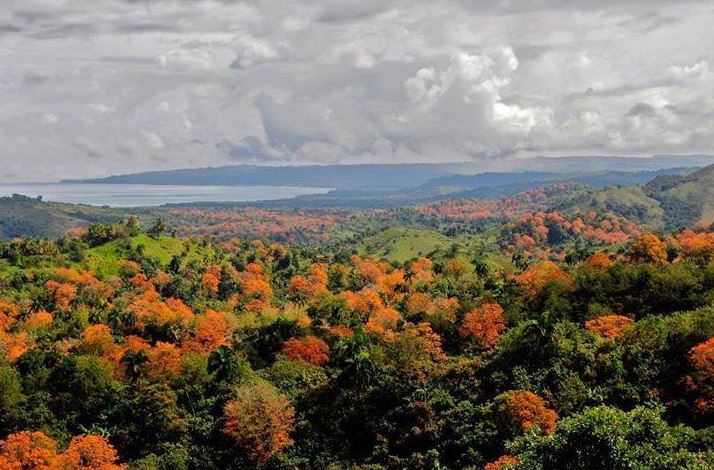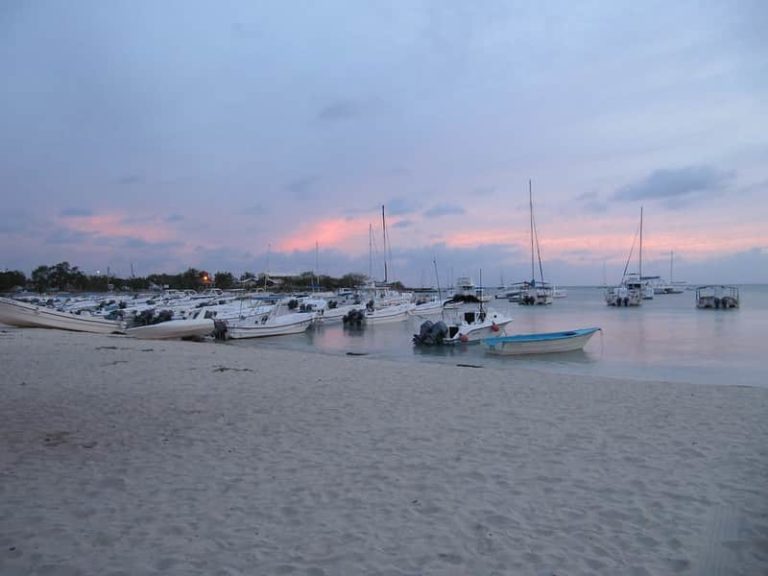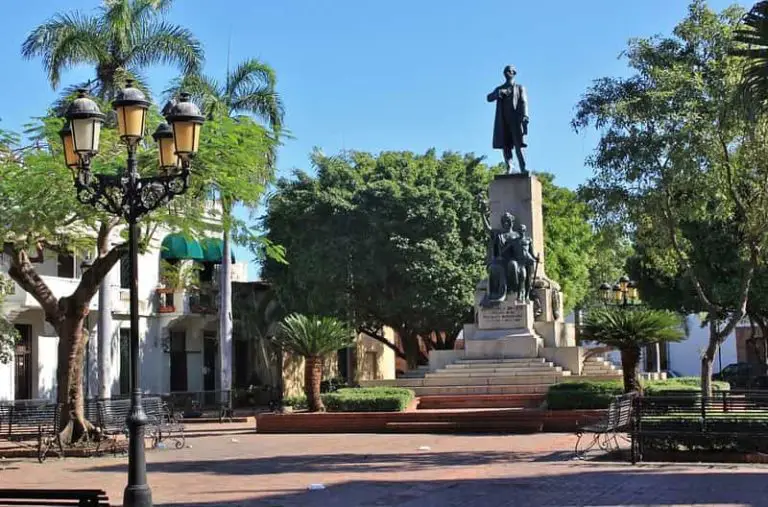Top 10 Tourist Attractions In The Dominican Republic, Recommended By Locals
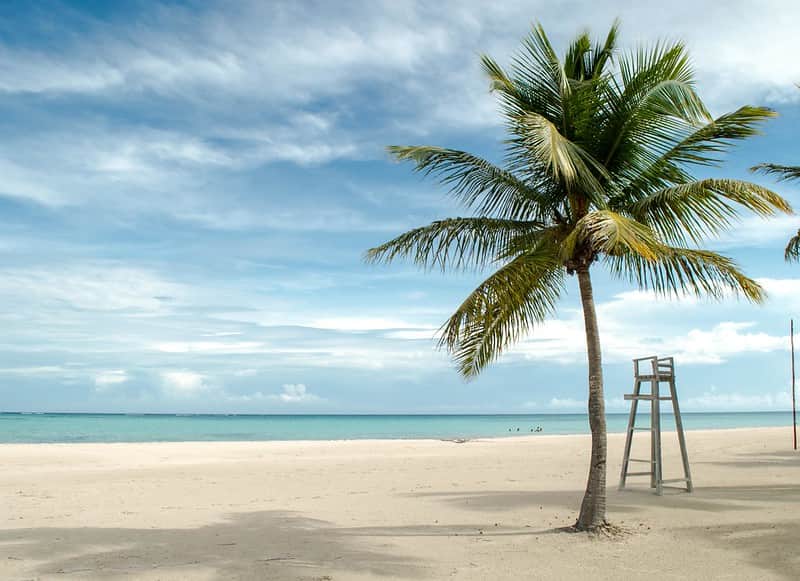
Like other Caribbean destinies, the Dominican Republic, the second-largest nation in the Greater Antilles, is a getaway paradise that welcomes tourists from all around the world who visit to enjoy its wonderful beaches and crystal clear waters.
It features rainforests, lush mountains, semi-desert areas, great beaches, beautiful luxury resorts, numerous festivals and carnivals, a solid tourism infrastructure and cities that retain enchanting colonial architecture.
Contents
1-The Colonial Zone of Santo Domingo
The historic city district has well-preserved colonial buildings that reflect the architectural style of the 16th century and are now home to museums, restaurants, shops and picturesque hotels.
Some of the Monuments and Historical Sites in the Colonial Zone include the Alcazar de Colon, the Museum of the Royal Houses, the First Cathedral of America, the Ozama Fortress, the San Francisco Monastery and Independence Park.
I have already described in this page in different topics the wonders of the colonial zone of Santo Domingo, being one of my favorite places, as a native of this country I have had the opportunity to visit the colonial zone many times.
Every time I go it is a new experience, an endless sensation, it is really a wonderful atmosphere that is created in its surroundings.
The colonial city of Santo Domingo has been the faithful witness of many histories of the country, from the foundation, development, until today, has been the protagonist of the most essential historical events in the formation and development, not only of the Dominican Republic but of the new world, of what today is known as America.
Within this island, which has an area of 110 square kilometers, the visitor can find natural attractions such as mangroves, coral reefs, coastal lagoons, caves, birds and reptiles. In addition, archaeological settlements and Taino caves.
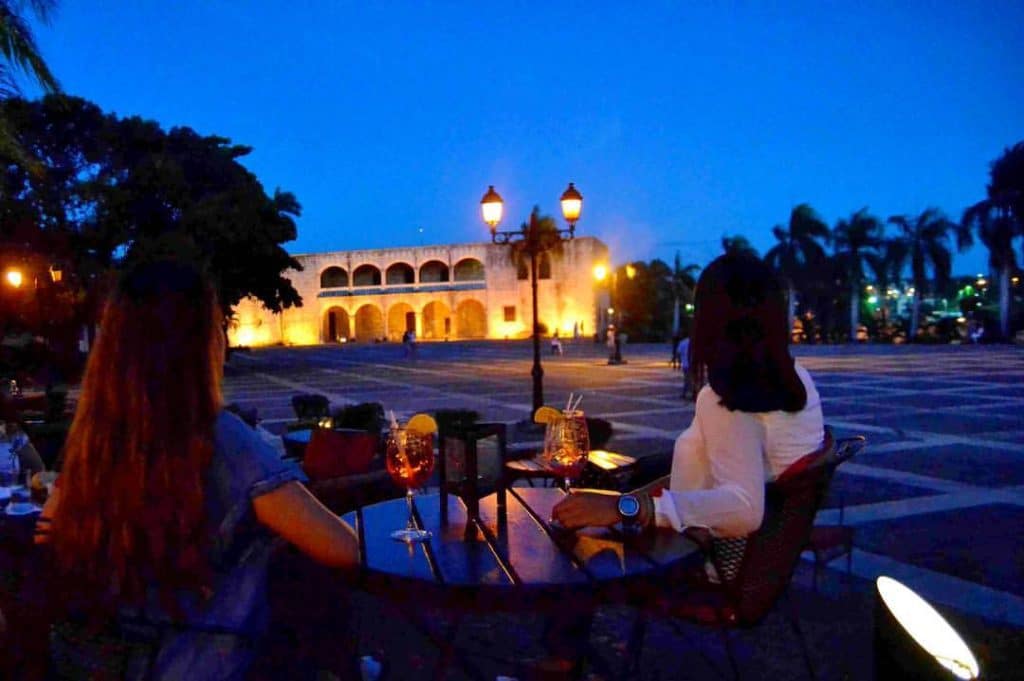
2-Punta Cana
Punta Cana is the most recurrent topic on this website. Located on the east coast of the Dominican Republic, it is currently the most popular tourist destination on the island and one of the most popular in the entire Caribbean.
It is an impressive coastal area of beautiful white sand beaches, emerald waters, a large number of shops and restaurants, and striking hotel complexes that meet the high needs and expectations of its guests.
Originally the Pun area consisted of dense forest and small fishing communities, but in the late 1960s, a group of American investors noticed the tourist potential of its beautiful beaches and began to develop a small hotel infrastructure.
The place was known as Punta Borrachón, but it was changed to something more suitable for their purposes. The word “Cana” was added because of the Cana palms that abound along the coast. Currently, there are more than 60 hotels and resorts along the coast of Punta Cana, and the airport receives more than half of all flights arriving in the Dominican Republic.
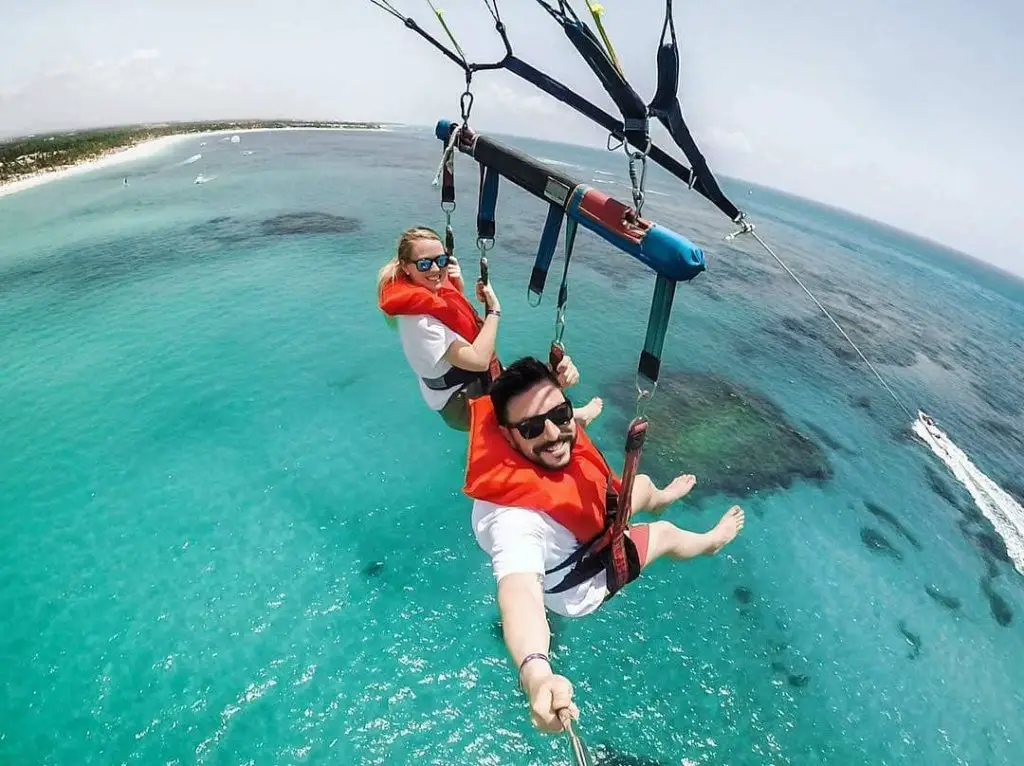
3-Cabarete
One of the most popular tourist destinations on the north coast of the Dominican Republic is not full of large resorts, but stands out for its relaxed atmosphere, huge crescent-shaped beach, small restaurants, attractive landscapes and ideal conditions for water activities such as surfing, windsurfing and kitesurfing.
By the beginning of the 20th century, Cabarete was a small fishing village, but everything began to change in 1940 after the arrival of Jewish refugees from Germany and Austria fleeing persecution by the Nazi regime.
Today it is one of the most popular tourist destinations on the north coast of the Dominican Republic due to its beautiful beaches, attractive landscapes and ideal conditions for water sports such as surfing, kitesurfing and windsurfing.

4-Samana Bay
Samaná Bay is a large bay that is located in the northeast of the Dominican Republic in the south of the Samaná Peninsula.
During colonial times, Christopher Columbus gave it the name “Gulf of Arrows”, as it was the scene of the first confrontation between the indigenous inhabitants and the Spanish conquerors.
During the 19th century, the Bay of Samaná attracted the interest of countries such as France, England and the United States as a military point to control the Caribbean.
A place of great natural beauty presents some of the main tourist attractions of the island.
There are many cays or small islands in the bay. Its best known is Cayo Levantado or Bicardi Island, a popular tourist destination that has white sand beaches, a rain forest, beautiful landscapes and a luxury hotel.
On the southwest coast, we have Los Haitises National Park, a protected area that has attracted world-famous eco-tourism lovers. In addition to its paradisiacal landscapes, Los Haitises has mangroves and cays that serve as sightings of a wide variety of native and migratory birds, and caves with pre-Columbian pictographs and petroglyphs.
However, what makes Samana Bay so special is that it is one of the best places for humpback whale watching. During the months of January through March, these mammals come from the east coast of the United States to this place looking for the warmth of its waters to reproduce.
There are specially built whale-watching sites, but excursions are also offered to get closer to the amazing animals.
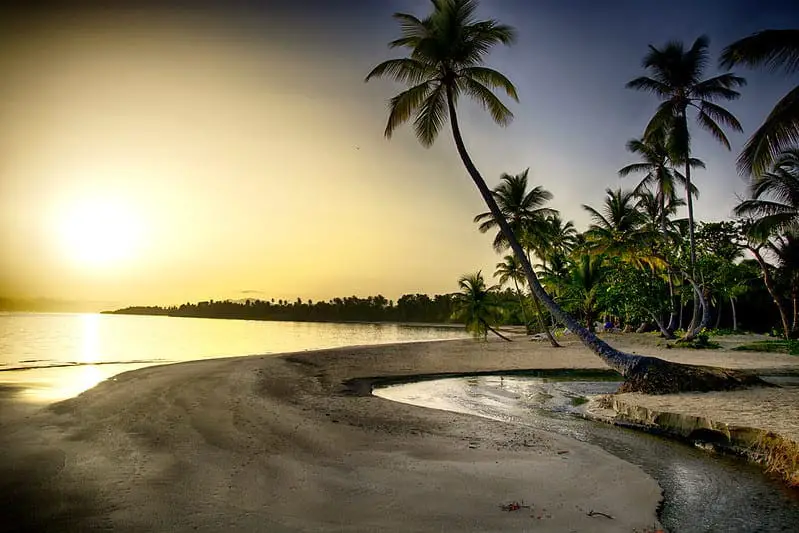
5-Saona Island
This tropical island located just a short distance from the southeastern tip of the Dominican Republic, each day attracts several hundred tourists who arrive in Catamarans and other small motorboats to enjoy its quiet atmosphere, soft sand beach and turquoise water.
Around Saona Island, you will find many bird species and coral reef ecosystems with impressive marine diversity.
Within this island, which has an area of 110 square kilometers, the visitor can find natural attractions such as mangroves, coral reefs, coastal lagoons, caves, birds and reptiles. In addition, archaeological settlements and Taino caves.
On Saona Island there are two villages, Mano Juan, a fishing destination, with a population of at least 500 inhabitants. This village has electricity, a primary health care center and a school for basic education.
The other is Catuano, which has a small population of at least 10 people. This is because its residents are migrating as they grow up in search of a better life. The only means of transportation to get there is by sea and air.
The excursions embark in the port of Bayahíbe, either in a catamaran or in a speedboat. In order to use this type of transport, it is obligatory to use life jackets and follow a series of instructions to the letter, for the safety of the excursionists.
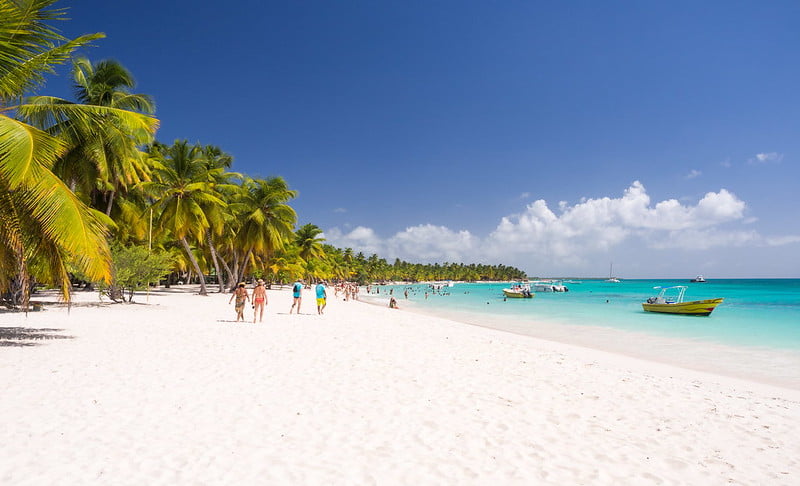
6-Bay of Eagles
This remote five-mile stretch of beach, part of Jaragua National Park (the largest protected area in the Caribbean region), is one of the Dominican Republic’s most pristine beaches. Located on the southwest coast of the country, Las Aguillas Bay features a calm environment, shallow, clear waters and semi-arid vegetation.
They say it is called the Bay of Eagles because it serves as a refuge for 130 species of birds, where 10 are endemic to the country, 76 residents and 47 migratory.
You can see plants there such as canelillas and oak trees. This bay is considered a crystalline beach that contains coral reefs, hawksbills, starfish, and seagrasses, as well as manatees, hawksbill turtles and green iguanas.
To get to the beach, it is preferable to take a sea route from Cuevas beach where there is a restaurant with the same name because from the beginning of the adventure, visitors can appreciate the huge rocks up close, although there is also a path where the ideal is to go in an all-terrain vehicle.
One of the reasons why measures were taken to preserve the place because of its reserve status is that the area does not have tourist hotel chains, among others.
Bahia de las Aguilas was declared a World Biosphere Reserve by the United Nations Educational, Scientific and Cultural Organization (UNESCO) in 2002, along with Sierra de Bahoruco National Park and Lago Enrriquillo National Park.
According to data from the Ministry of the Environment and Natural Resources, the Reserve covers an area of 4,858 square kilometers, divided into 3,184 square kilometers of core areas, and 900 square kilometers of marine areas.
It groups the three national parks of the so-called Enriquillo Region, which are Jaragua, Bahoruco and Lago Enriquillo.

7-Altos de Chavon
Known as “The City of Artists”, this beautiful recreation of an ancient Mediterranean-style town is located on the Chavon River in the province of La Romana. Altos de Chavon is home to a Roman-style amphitheater, a charming church, a cultural centre, an archaeological museum, art galleries, restaurants and a number of picturesque shops.
It’s an outstanding place, it’s as if you were in a small Tuscan village, full of restaurants and spectacular views, it has some shops too, among them a well-stocked cigar shop, beautiful stone architecture, you enjoy a Caribbean atmosphere, good place for photoshoots and concerts.
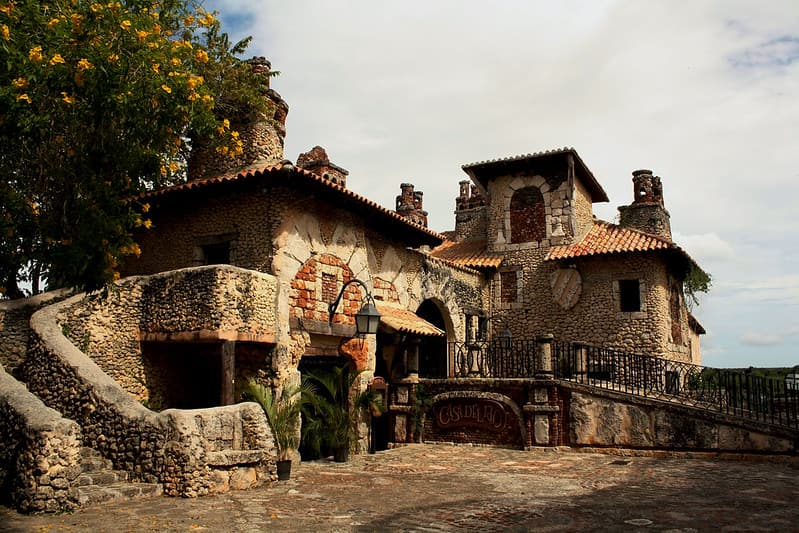
8-Los Haitises National Park
On the northeastern coast of the island, Los Haitises National Park has attracted worldwide fame with lovers of ecological tourism for its paradisiacal landscapes, caves with pre-Columbian pictographs and petroglyphs, and a great diversity of tropical flora and fauna.
It is one of the main sites for the observation of endemic, native and migratory birds in the Caribbean.
The current vegetation of Los Haitises is mostly wooded. The terrain and soil have allowed the development of some variants of the forest. A distinction can be made between the forests between the mogotes, on a mineral soil with organic material, and the forests above the mogotes, on the rock and almost without mineral soil. This park contains the largest sample of the Caribbean mangrove.
Los Haitises National Park is one of the national protected areas that has suffered the most transformations in its conformation. It was first created, with the name of Los Haitises Reserved Zone, as a forest reserve of 208 km² of extension by means of the Law No. 244 of January 10, 1968.
Later, the same area was declared a national park by Law No. 409 of June 3, 1976. Later, by Decree No. 233 of July 1996, its limits were modified. The latter was ratified by the General Law on the Environment and Natural Resources No. 64-00 of August 18, 2000.
From the hydrographic point of view, Los Haitises and its areas of influence include two regions: the lower basin of the Yuna river and the Miches/Sabana de la Mar area. The Yuna River flows through two mouths: the Yuna and the Barracote River.
In addition, the Payabo, Los Cocos, and Naranjo Rivers are located in the area, as are the Cabirma, Estero, Prieto, and other waterways. In spite of the advanced processes of deforestation in the area, rainfall is still considerable and ranges from 1,900 to 2,000 mm annually, making it one of the regions in the country with the highest rainfall and where it rains the most days of the year.
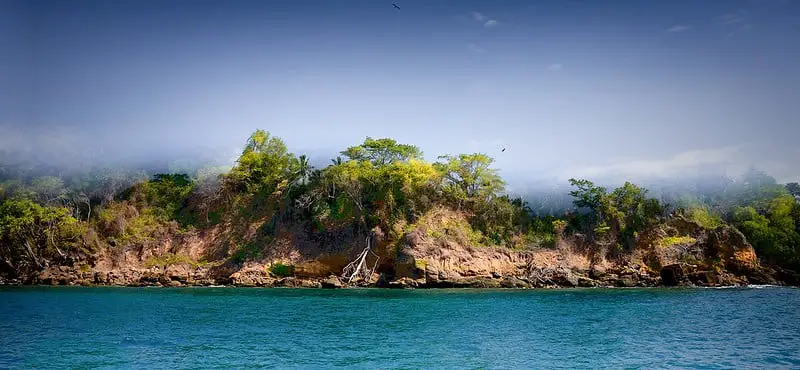
9-Lake Enriquillo
Lago Enriquillo is a huge saltwater lake located in the southwestern region of the Dominican Republic. Its waters are shared by the provinces of Independencia and Bahoruco. It has an area of 265 square kilometers (the largest in the Dominican Republic and the Antilles). It is also 29 meters below sea level making it the lowest point in the Caribbean.
There are three small islands in the lake. Cabritos Island is the most important one. The other two islands are Barbarita, also known as “Chiquita”, and Islita. In prolonged droughts, these islands, especially the last two, become peninsulas and can be reached on foot.
The lake is named after the Taino cacique who rebelled against the Spanish in the early 16th century and hid in the mountains south of the lake. Previously, it was known as Lake Jaragua.
It has a higher concentration of salt than the sea since the rivers that flow into the lake are small and the evaporation of its waters is very high. Lake Enriquillo is part of the Lago Enriquillo and Isla Cabritos National Park and the Jaragua-Bahoruco-Enriquillo Biosphere Reserve.
Due to the beauty of its waters, its rich flora and the special and endemic nature of its fauna, Lake Enriquillo has become an important tourist destination, both for local and foreign tourists.
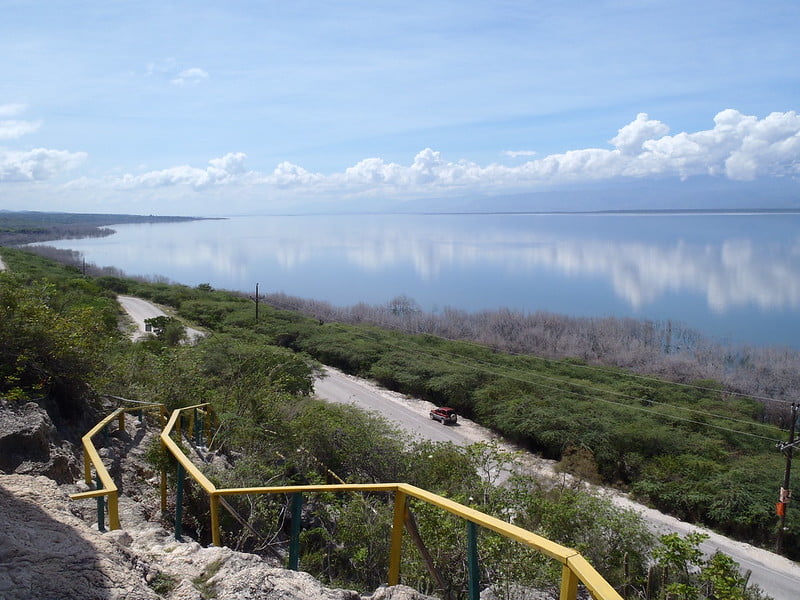
10-Las Galeras
Las Galeras is the perfect place for vacationers looking for a quiet and remote space in front of the sea. Here you will find spectacular coastal landscapes including some of the most beautiful beaches of the island: Playa Rincón and Playa Frontón.
Las Galeras is also known for its water activities such as fishing and diving.Las Galeras, one of the three municipal districts of the municipality of Santa Bárbara de Samaná, is located at the eastern end of the Samaná Peninsula.
Las Galeras owes its name to the old warships known as galleys that were used to transport prisoners and slaves. In the mid-sixteenth century, two of these galleys were housed here.
Las Galeras was originally a small fishing village adorned with a certain natural beauty. Among the most important economic activities you can find here are fishing, coastal agriculture (coconut, yam & yautia) and tourism. Its beaches are among the most beautiful in the Dominican Republic and include Playa Rincón, Playa La Playita, Playa Frontón and Playa Madame.
In addition to its spectacular coastal landscapes, Las Galeras is recognized as one of the best fishing spots on the Samana Peninsula. Other popular activities include scuba diving, snorkeling, boating and horseback riding and hiking.
The patron saint festival is held every August in honor of San Sebastian and includes activities such as parades and pilgrimages.
